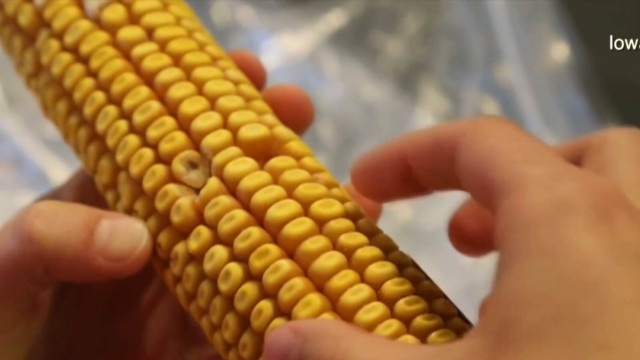In America’s Midwest, corn is king -the largest crop in all the United States.
So, when new technology emerges with the promise of breeding better plants – corn farmers are anxious to use it.
CGTN’s Hendrik Sybrandy reports.
This summer, a project led by the Plant Sciences Institute at Iowa State University is photographing corn plants during their entire life cycle. The information gathered could help produce better seeds in the future.
“With time-lapse photography you can see some very interesting things happen,” David Ertl, Iowa Corn Technology Commercialization Manager said. “By collecting plant growth information and understanding how corn develops we can start to understand which genes control which traits.”
And, Ertl added, how plants with different genetic makeups interact with the environment, and how some plants perform better than others.
“Some projects we’re imaging the whole plant, some projects we’re imaging looking down at the plant, other projects maybe we’re going to focus on the tassel structure,” said Lisa Coffey, Lab Nursery Manager.
An army of 800 cameras, attached to solar-powered battery chargers and enclosed in waterproof cases, is being deployed to various corn fields. The point-and-shoot cameras are programmed to take images every ten minutes or so.
“That’s a lot of information,” said Baskar Ganapathysubramanian with Iowa State’s Mechanical Engineering Dept. His job is to use the power of Big Data to make sense of some four million images.
“So we use advances in image processing, advances in artificial intelligence, advances in machine learning to look at this large treasure trove of data,” Ganapathysubramanian said. And then, he added, extract out the relevant parts.
No longer, researchers argue, will you need to crossbreed plants over and over to develop the best genetic traits. They’re looking for high corn yields that are also dependable from year to year.
“In a perfect world, your perfect plant will be able to handle whatever the weather can throw at it,” Coffey said. “The heat, the rain, the stress, all of it.”
These are bountiful times in the corn industry in which more is produced than consumed. But those involved with this project said with always-changing weather and the world’s growing population, the need for even bigger harvests is there.
 CGTN America
CGTN America

